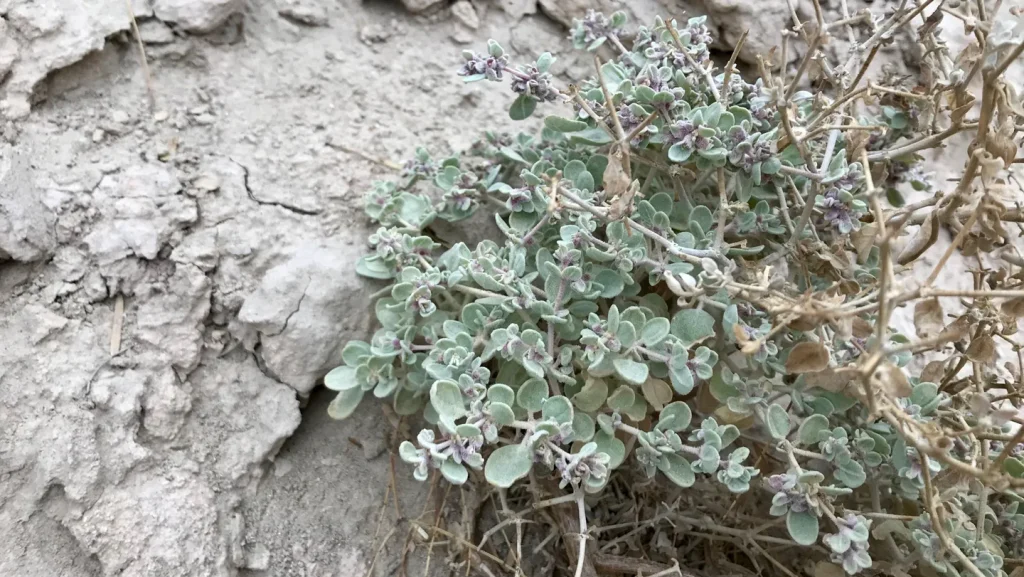Desert Survivor: How a Flowering Plant Thrives in Death Valley’s Extreme Heat
In the scorching landscapes of Death Valley National Park, where summer temperatures regularly exceed 50°C (122°F), most plants struggle just to survive. But one remarkable plant defies these brutal conditions—the Arizona honeysweet (Tidestromia oblongifolia) doesn’t merely endure the extreme heat; it flourishes in it. Recent research published in Current Biology reveals the extraordinary adaptations this desert plant employs to thrive when others wilt.
Plant biologist Karine Prado of Michigan State University describes the Arizona honeysweet as a plant that actually waits for the hottest month just to accelerate its growth. In 1972, scientists discovered that this remarkable shrub performs photosynthesis best at a blistering 47°C—the highest optimal temperature known for any plant on Earth. But until recently, the mechanisms behind this heat tolerance remained a mystery. To uncover these secrets, Prado and her colleagues collected seeds from Death Valley’s Furnace Creek, growing them under controlled conditions before subjecting some to typical July temperatures of 47°C to observe their responses.
The results were astonishing. Plants exposed to Death Valley summer conditions increased their photosynthesis rates within just two days, and over the next eight days, they tripled in size. Under the microscope, researchers discovered something truly remarkable. While intense heat typically damages chloroplasts—the disc-shaped cellular structures responsible for photosynthesis—the Arizona honeysweet’s chloroplasts remained intact at 47°C. More surprisingly, in specialized leaf cells that convert carbon dioxide to sugar, the chloroplasts transformed from their typical disc shape into cups. This shape-shifting ability appears unique among plants, previously observed only in certain algae. Though the exact benefits of this cup shape remain unclear, researchers suspect it may help the plant trap carbon dioxide more efficiently in extreme heat.
Beyond these microscopic transformations, the Arizona honeysweet employs several additional adaptations to survive Death Valley’s harsh conditions. It develops smaller leaves with smaller cells, which likely reduces water loss and heat exposure. The plant also activates specific genes for repairing heat damage and adjusts essential photosynthesis enzymes to maintain functionality at high temperatures. As plant biologist Ive De Smet from Ghent University notes, heat-proofing a plant isn’t as simple as “tweaking one or two genes or proteins”—it’s a complex suite of adaptations working in harmony.
Understanding these mechanisms isn’t merely an academic curiosity. As global temperatures rise, heat-limited photosynthesis increasingly threatens crops worldwide, putting food security at risk. The Arizona honeysweet’s remarkable adaptations could provide valuable insights for scientists working to develop heat-resistant crops. By studying how this desert dweller has mastered life in Earth’s hottest environments, researchers may discover ways to engineer or breed food crops that can withstand our warming planet’s challenges.
The story of the Arizona honeysweet demonstrates nature’s incredible resilience and adaptability. From growing smaller, more efficient leaves to shape-shifting its cellular machinery, this unassuming desert plant has developed a comprehensive strategy for not just surviving but thriving in conditions that would kill most other plants. While humans struggle to cope with extreme heat waves, this remarkable plant has spent millennia perfecting the art of desert living, offering valuable lessons for both science and agriculture in an increasingly warming world.
As climate change intensifies extreme weather events worldwide, the humble Arizona honeysweet stands as a testament to life’s remarkable ability to adapt to even the harshest environments. By unlocking the secrets of its heat tolerance, scientists hope to help ensure our agricultural systems can withstand the challenges of a hotter future—turning lessons from Death Valley’s most resilient resident into solutions for global food security.


